From the petroglyphs of ancient societies to the stunning views of our planet from space, humans have endeavored to visualize and accurately map our world. As early geographers recorded the experiences from travelers and merchants, they created lists of places and geographic features. To spatially represent these data, geographers mapped the distances between features from the perspective of the traveler. Maps have aided navigation, settled disputes, and illustrated the extent of an Empire’s power. Beyond these and other utilitarian uses for maps, the desire to discover what was beyond the edges of the map–to venture into the unknown–brought about an Age of Exploration that continues into the 21st century with space exploration. [more]
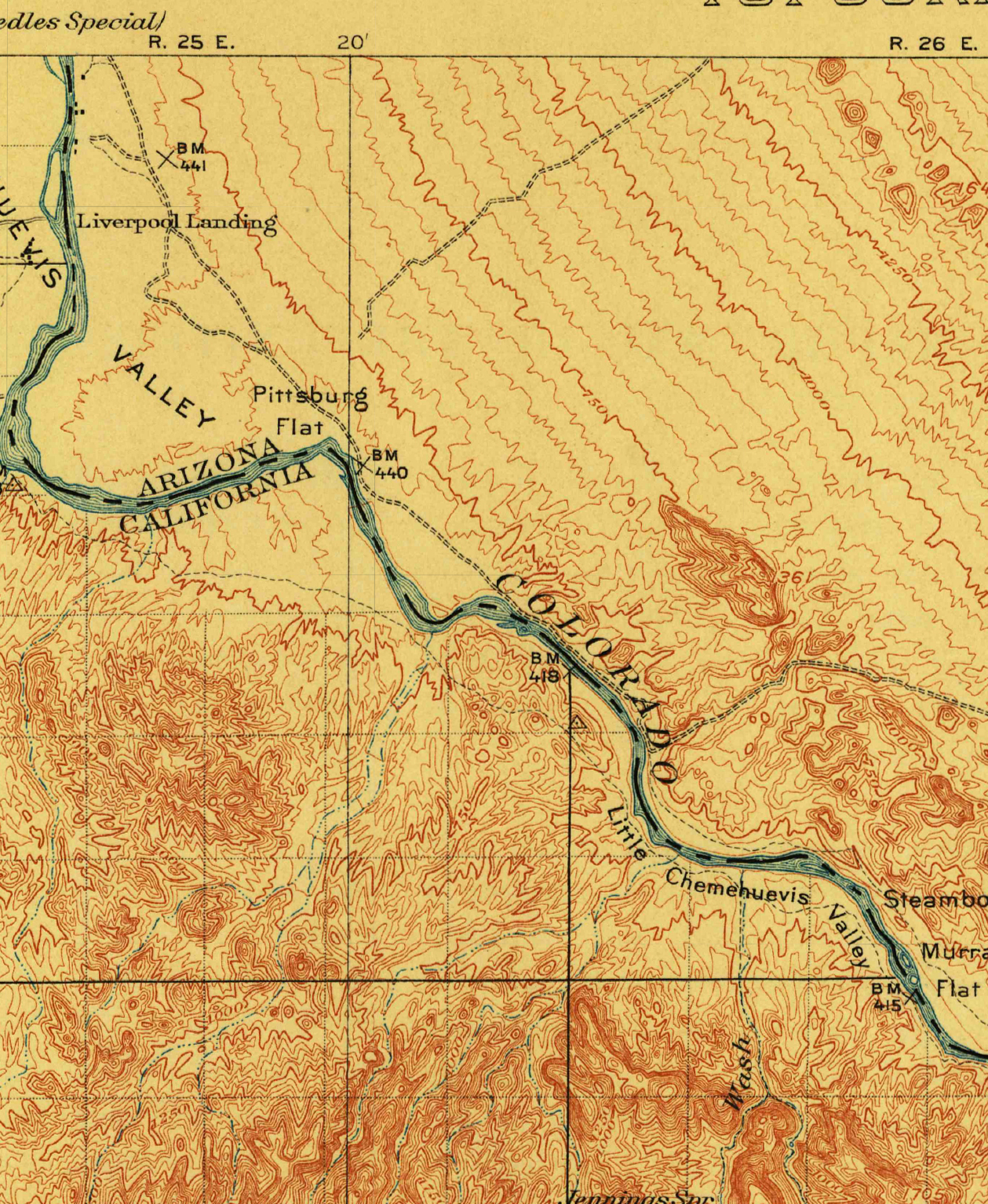
Creating an Oasis in the Desert: Lake Havasu City, Arizona, 1911
Parker Dam was constructed on the California-Arizona border on the lower Colorado River during the 1930s, as part of a project to employ people during the Great Depression, to generate electricity, and to provide water that could be pumped into aqueducts for agricultural, industrial, and residential use in other parts of Arizona.
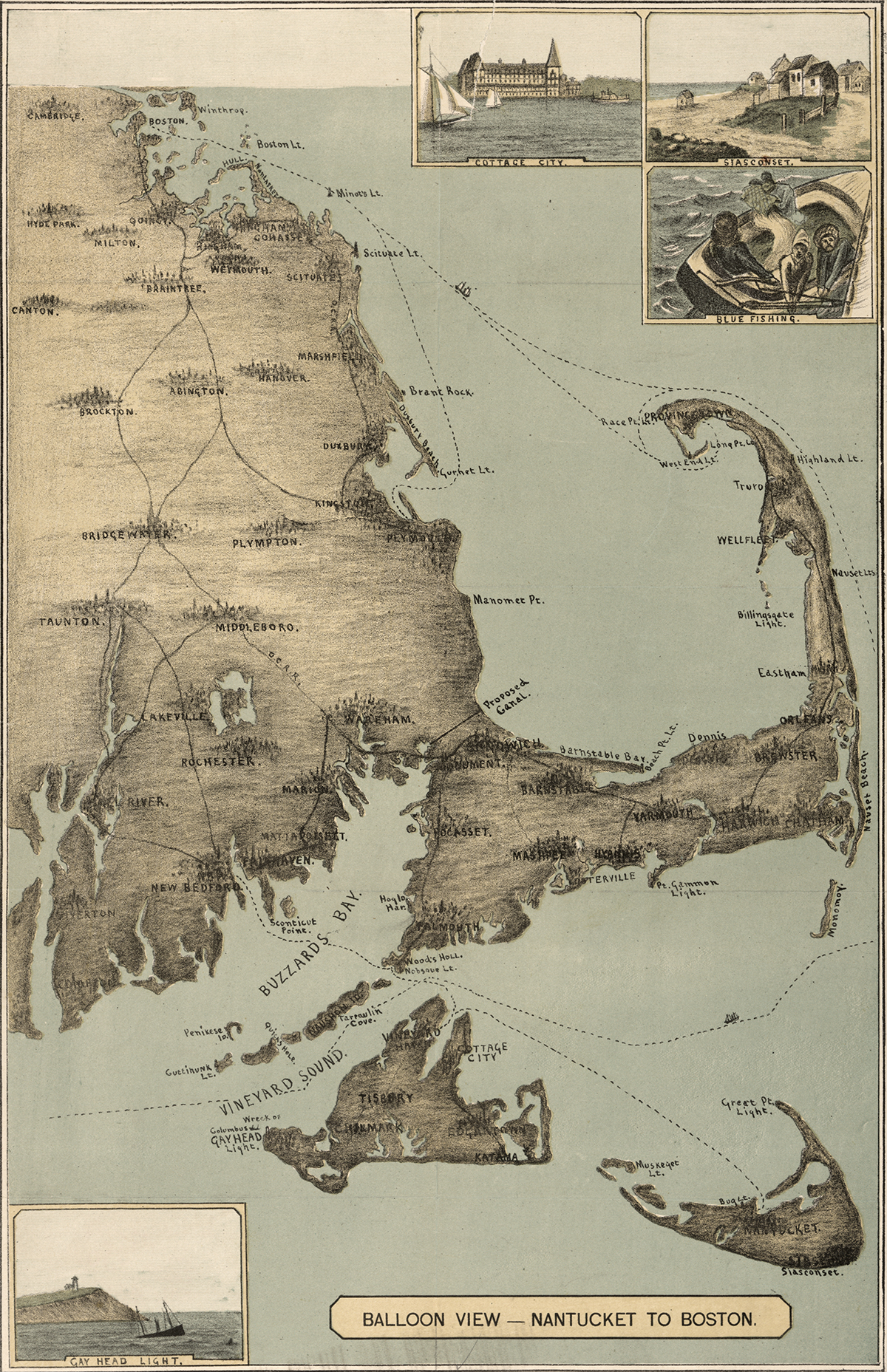
Cape Cod, 1885
The sandy peninsula of Cape Cod, Massachusetts juts into the Atlantic Ocean with its characteristic crook and twirl in both images: “Balloon View–Nantucket to Boston” made in 1885, and a Landsat 8 satellite image made 129 years later in 2014. Aspirations to rise above the Earth and to record the Earth’s surface from there are a long-standing theme of human culture.
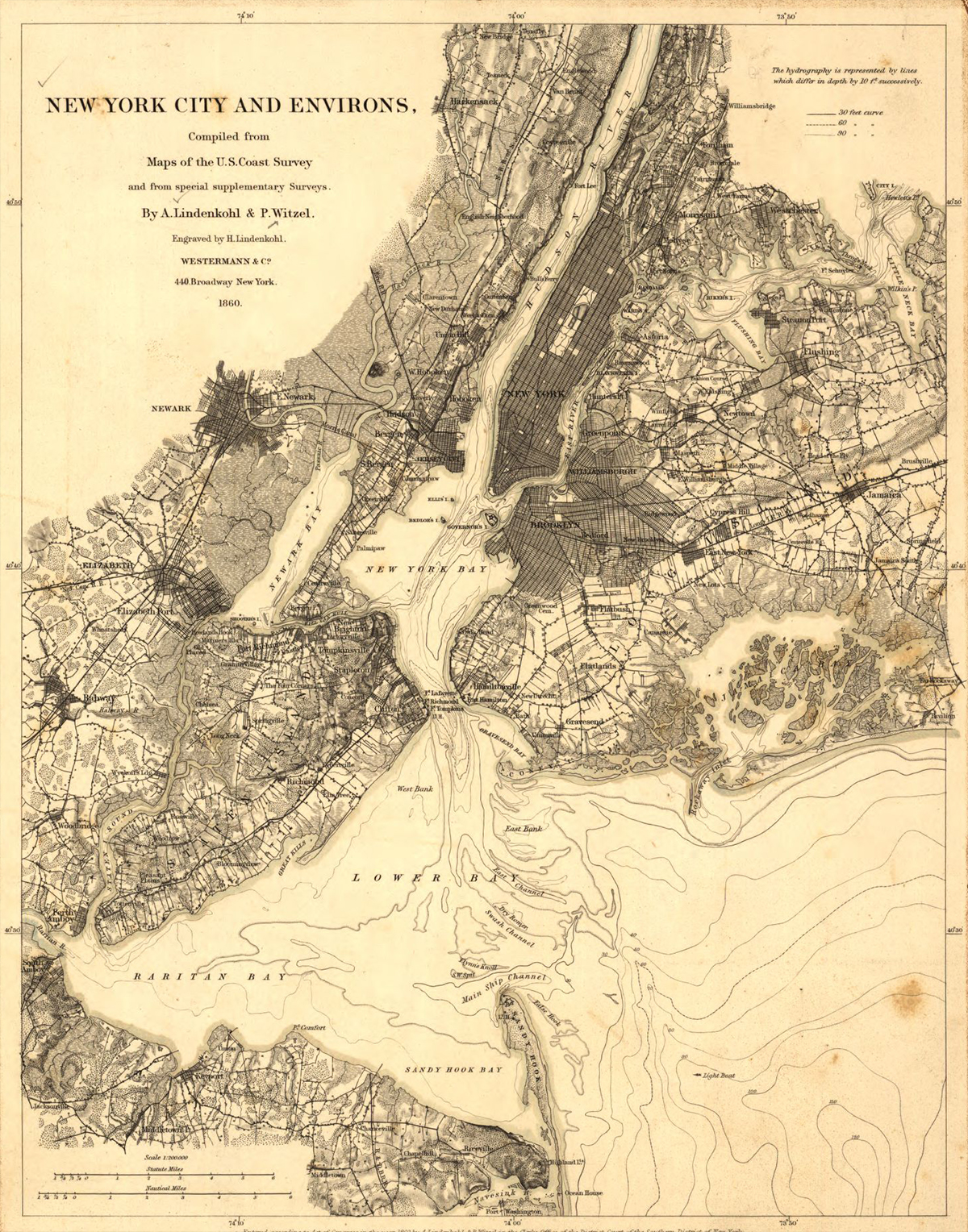
New York City, 1860
New York City in 1860 was thriving for some of the same reasons the city thrives today. The city’s location was then, and is now, central for the movement of people and freight to and from Europe and elsewhere. Waterways were the primary transportation pathways in 1860. New York’s deep and well-connected port, nearer to the ocean than the ports of other cities on the East coast of the United States, was a huge boon to shipping. The Hudson River connected New York City’s port to a wide gateway westward through the Erie Canal to Lake Erie and beyond. Europe sent and received goods and people across the Atlantic Ocean to New York. Cities on the Great Lakes could enjoy the benefits of shipping to and from Europe, completely by water!

Great Salt Lake, 1859
With imagination one can explore and understand how very different life was for people in the United States before the Golden Spike was hammered into the ground in Utah in 1869. That was a much-hailed event that knitted the country together by linking two railroad lines from the eastern and western ends of the continent. Just ten years earlier, when the map at left was made, life was more centered on local transactions. It was hard for families with children to visit friends because travel in this part of the country was slow and arduous, over bumpy dirt roads by horse and wagon. A life involving daily travel for several miles from home each day to work was not feasible. Yet change was in the air even then.
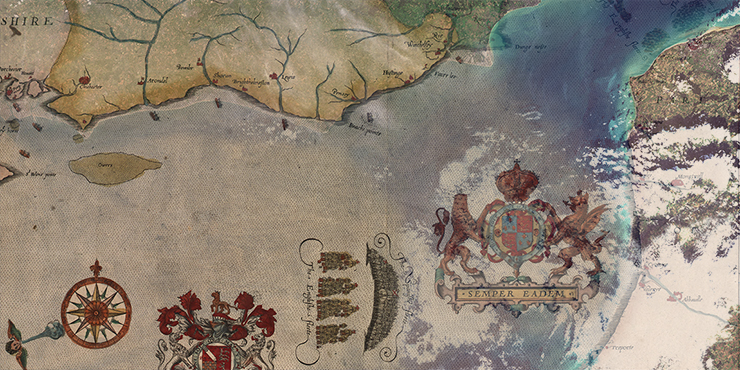
Winds of Change: Defeat of the Spanish Armada, 1588.
The series of battles that unfolds with these seven maps is considered one of the most important campaigns in naval history; a campaign that ended with the defeat of the powerful Spanish Armada in 1588. Cartographer Robert Adams created these maps for a 1590 book chronicling the famed naval campaign.
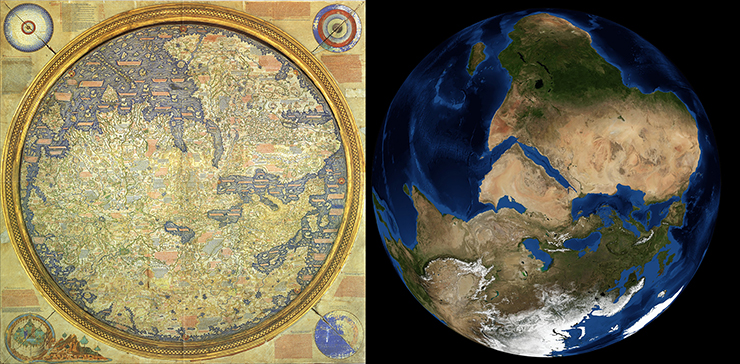
Fra Mauro’s Mappamundi
Long before the famous Earthrise photo taken by Apollo astronauts, creating an image or map of the entire known world was a singular human endeavor. Imagine a half a millennium earlier when only those who had traveled could describe distant lands. Imagine watching the hustle and bustle of merchants and sailors returning to the port of Venice. What stories could they tell to paint a portrait of our planet?
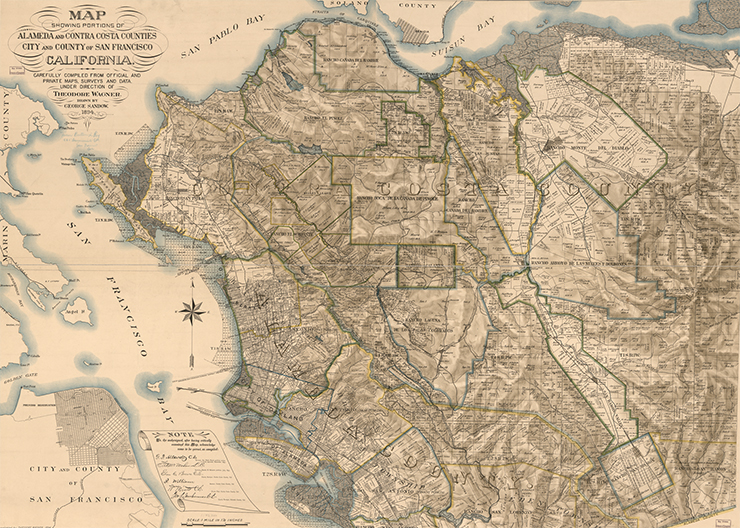
Northern San Francisco Bay, 1894
Maps often convey our relationship to the world. In this map of the northern San Francisco Bay and surrounding environs, the early development of the region is recorded in detail. The full and arduous title of this map is “Map showing portions of Alameda and Contra Costa counties, city and county of San Francisco, California, carefully compiled from official and private maps, surveys and data.”
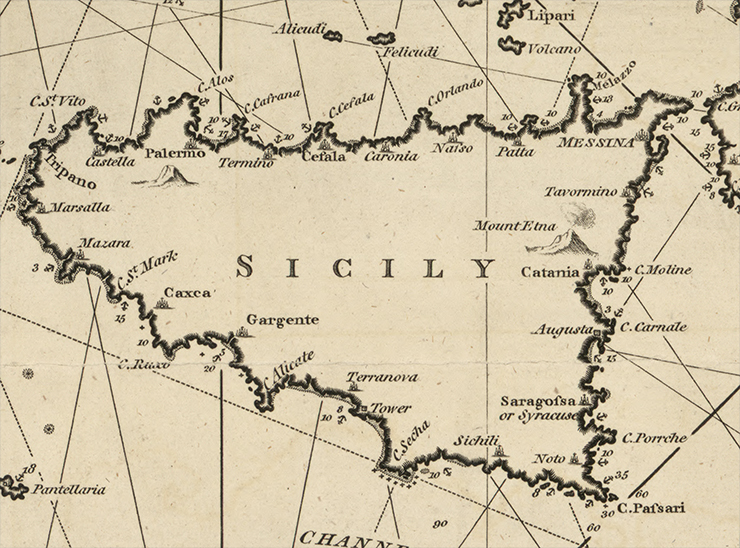
Sicily, from W. Heather & Co.’s A New Chart of the Mediterranean Sea, 1797.
Maps often help us manage our world. In 1797, when cartographic engraver and chart publisher William Heatheri released his New Chart of the Mediterranean Sea, he had the needs of sea merchants foremost in mind.

